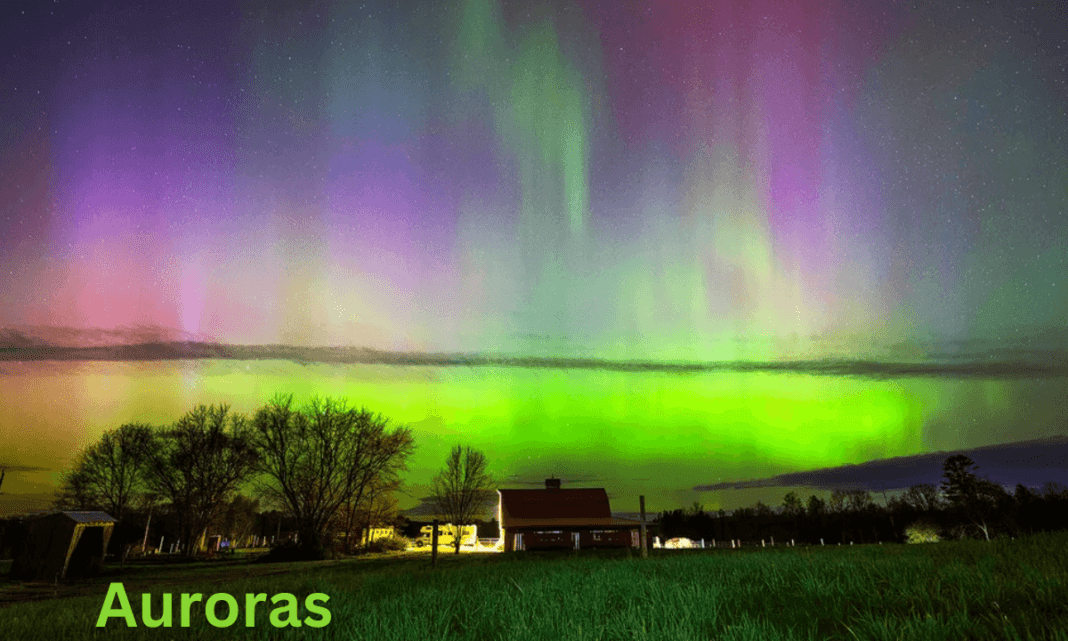Potentially the Most Powerful Auroras in Centuries Occurred in 2024 Due to the Great Solar Storm
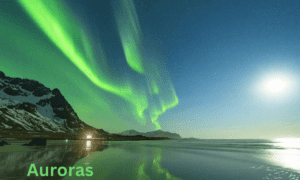
The shimmering lights in the sky are known as auroras. Like delicately billowing curtains, the blue, red, yellow, green, and orange lights switch on and off and change shape. Nighttime visibility of auroras is limited to lower polar locations.
Observed most frequently in high-latitude parts of the Earth, aurora borealis is a natural light show that may be observed all over the globe. Dynamic patterns of brilliant lights filling the entire sky in the form of curtains, beams, spirals, or dynamic flickers are displayed by auroras.
Auroras: What They Are
Spectacular ribbons of light known as the northern lights—also called the aurora borealis—have enchanted viewers for centuries. Despite its stunning visuals, this light show is quite aggressive.
Sunlight causes the northern lights because charged solar particles can smash into Earth’s upper atmosphere at 72 million kph (45 million mph), but the planet’s magnetic field shields us from their impact.
Scientists and skywatchers are captivated by the stunning process that occurs when particles are directed toward the poles by Earth’s magnetic field. This phenomenon is similar to the southern lights, which are described below.
Is Talking To Yourself Normal Behaviour?
How Can One Best Observe The Northern Lights?
- To see an aurora, you need to be in the correct spot at the right time unless you’re fortunate. You can see them better because we can tell you when and where they will most likely appear. Your chances will improve if you are mobile and in Norway between late September and mid-March, on the darkest, moonless evenings.
- No matter what, keep going! Staying up late to take advantage of the auroral zone requires pushing through the frigid northern evenings. Stay up until after midnight on good nights to see the Lights, but they become visible as soon as it gets dark.
- Capturing the Northern Lights through photography is both a captivating and gratifying experience. Images captured by modern cameras, especially smartphones, are vivid, detailed, and easy on the eyes. However, refrain from going overboard. You must see the Lights with your own eyes to fully appreciate their brilliance, vibrancy, and delicate movement. What you see in your mind is private, yet the emotions it evokes are real.
Do You Have a Favorite Fact About Auroras?
One of my favorite things about auroras is that they may be seen on various planets. A comet, several moons, and every planet in our solar system (except Mercury) can display auroras. In addition, we have measured auroras on other stars and maybe even exoplanets; these findings can shed light on the interiors and habitats of these faraway worlds.
THE BEST PLACES IN EUROPE TO VIEW THE WINTER STARS
- The most convenient place for Europeans is to travel to the northernmost regions of Sweden, Finland, Norway, and Iceland. There are many tours to choose from and many locals who understand English in those areas.
- Remember that no matter where you’re headed, an overcast sky can make it hard to see the aurora on any night if you can, make sure to factor in extra time in case of bad weather.
The Origins and Variations of Aurora Colors: What Gives Rise to Them?
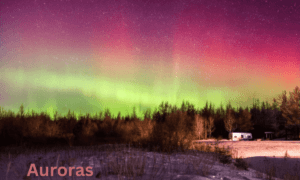

Astonishing and captivating for millennia, the aurora borealis (the northern lights) or aurora australis (the southern lights) is a natural phenomenon that has enchanted humans.
The interaction between the solar and Earth’s atmospheres is significant. This spectacular show, best seen near the planet’s poles, appears as a mesmerizing display of dancing light. Auroras can be a sight to behold, captivating skygazers with mesmerizing colors ranging from green to pink, blue, and purple.
This auroral chaos is not without method, though. This all-inclusive guide delves into the science of aurora borealis, the phenomenon responsible for the spectacular sky displays we know and love.
First, Let’s Review the Process of Aurora Formation Before Moving on to the Various Colors of Auroras.
Solar particles can reach speeds of up to 72 million kph (45 million mph) when they collide with Earth’s upper atmosphere, causing auroras. A magnetic field redirected The particles to the north and south poles.
Particles with electric charges travel through Earth’s atmosphere, which excites gas molecules and atoms, creating the aurora borealis. This method is quite similar to the operation of neon signs:
Atoms and molecules are “excited” by electrons, but they can only return to their ground state when they release the energy as light or photons. The gas combination within the tube determines the neon light’s color, the same way the atmospheric gas mixture determines the color of an aurora.
Earth’s atmosphere comprises roughly 78% nitrogen, 21% oxygen, 0.93% argon, and 0.04% carbon dioxide. In addition to water vapor, our air contains minute quantities of helium, neon, krypton, methane, ozone, and hydrogen.
Green Auroras are the Most Prevalent.
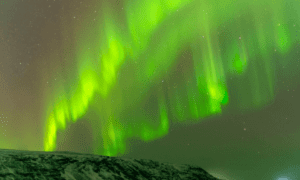

The Canadian Space Agency reports that charged particles clash with the Earth’s atmosphere’s high oxygen concentrations at around 60 to 190 miles (100 to 300 kilometers), resulting in green auroras.
The green spectrum is the most visually appealing to the human eye, so we can perceive green auroras more clearly than any other color.
What is Web3 Technology: A Realistic Vision for the Future of the Internet or an Idealistic Wish?
Fiery Azure
Red auroras are less common than white auroras and are typically linked to very active solar flares.
They happen when solar particles combine with oxygen at greater heights, often between 180 and 250 miles (300 to 400 km) in elevation, as reported by the CSA.
Reds become visible at this altitude because the oxygen concentration and wavelength are lower. The upper parts of the show are a common place to spot red auroras.
Verdant and Lilac Aurora
Like beautiful curtains of light, green, blue, and purple ribbons spread across the sky and towards the stars.
Blue or purple auroras are less frequent but more likely to appear during intense solar activity.
According to The Aurora Zone, an aurora travel company, these hues are created when solar particles hit with nitrogen in Earth’s atmosphere at an altitude of 60 miles or below.
The lower portions of the display are more likely to see auroras in blue and purple hues.
Goldenrod, Pink, and Yellow
A distant island stands out against a starry sky adorned with aurora borealis; a yellowish strip of light approaches the horizon, while a vibrant pink aurora emerges above.
Southern Lights, or Aurora Australis, sweep across Betsey Island, Tasmania.
Rarely seen during periods of intense solar activity, auroras that are yellow or pink in color are highly unusual. The combination of red, green, and blue auroras produces these hues.
THE IMPACT OF SUNLIGHT
The frequency, color, and intensity of auroral displays are greatly affected by solar activity, which includes solar flares and coronal mass ejections. Enhanced and more diverse aurora displays are more likely to occur when the sun releases more particles into Earth’s atmosphere, a phenomenon known as solar flares.
Periods of maximum solar activity, or cycles, occur every eleven years and cause the sun’s activity to fluctuate. During solar cycle 25, which is currently underway, astronomers project that solar activity will peak in 2025.
Why Do the Northern Lights Have a Red Hue When Seen at Low Latitudes?


For two reasons: One, the red light is more pronounced at higher elevations, making it visible from further away from the poles; in fact, there are occasions when the upper edge of the red light is the only thing visible. In addition, a different type of aurora, mainly red and seen at lower latitudes, can emerge during mighty storms.
Why aren’t nitrogen-induced blue/purple auroras more prevalent, given that there is more nitrogen than oxygen in Earth’s atmosphere?
At 100 km, the air mix is familiar, but at the altitude where the aurora occurs, it is different. The atmosphere is significantly thinner and stratified into strata due to gravity there. Overlying the oxygen layer is the nitrogen layer.
Fossil Groundwater Lake Unearthed Beneath Sicilian Mountains: 6 Million Years
Which Color of Aurora is the Rarest?
It’s difficult to say since the colors in the aurora combine in a constantly shifting chemical mixture, which is how the more unusual colors come to light.
AIM FOR THE FUTURE AND RESTORATION
For Swedish fishermen, seeing an aurora borealis was a welcome sight. The Greek words aurora, meaning “sunrise,” and boreas, meaning “winds,” are the origins of the name aurora borealis, as explained by the online travel agency Arctic Kingdom.
The goddess Aurora, sister of the sun and Moon would usher in a new day in Greek mythology by gliding across the sky in a multi-hued chariot. The Romans also believed that Aurora was the dawn goddess. Curiously, despite the aurora borealis being most commonly seen in the late evening, both cultures linked it to the start of a new day.
Potentially the Most Powerful Auroras in Centuries Occurred in 2024 Due to the Great Solar Storm
The most potent auroras seen in the last 500 years could be surpassed by the northern and southern lights caused by the current extreme space weather.
We may have needed clarification about how spectacular this month’s amplified auroras were.
The auroral displays that captivated onlookers from Florida in the United States to Ladakh in northern India two weekends ago might have been among their most potent light shows since records began.
“With reports of auroras visible to as low as 26 degrees magnetic latitude, this recent storm may compete with some of the lowest-latitude aurora sightings on record over the past five centuries, though scientists are still assessing this ranking,” according to a statement from NASA.
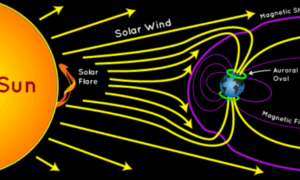

“It’s a little hard to gauge storms over time because our technology is always changing,” research professor Delores Knipp of the University of Colorado Boulder, who studies space weather, stated in the same statement. “Aurora visibility is not the perfect measure, but it allows us to compare over centuries.”
Observations of the aurora borealis and polar lights are often reserved for very high latitudes, including the Arctic and northern Canada. On May 10, however, the vibrant hues moved closer to the equator due to the most excellent geomagnetic storm to strike Earth since Halloween of 2003—a rare G5 storm—that our hyperactive sun had unleashed a few days before.
Two active sunspot areas (3663 and 3664) were the source of eighty-two “notable” solar flares recorded by NASA’s Sunspot Dynamics Observatory from May 3 to May 9. These sunspot clusters grew so intricate that they erupted multiple times throughout the week.
At least seven CMES, or coronal mass ejections, began hurtling toward Earth on May 7 and started to bombard our planet on May 10, the day of the most intense auroras.
“The CMEs all arrived largely at once, and the conditions were just right to create a historic storm,” stated space physicist Elizabeth MacDonald.
Due to this storm’s severity, the United States issued a storm warning for the first time in over twenty years, which is responsible for predicting solar storms and their effects on Earth. In anticipation of the warning, NASA placed ICESat-2, one of its satellites, into safe mode. According to the space agency, other instruments on board other missions were also turned off.
Scientists are examining reports from citizen scientists to the Aurorasaurus project, which is financed by NASA and observes auroras globally, to better understand the event’s scope. With the assistance of citizen scientists, tweets and reports about the aurora are compiled into a map, as stated on the website. Scientists can use each validated report as information to examine and use in space weather models.
“We’ll be studying this event for years,” stated Teresa Nieves-Chinchilla, acting head of NASA’s Moon to Mars Space Weather Analysis Office. “It will help us test the limits of our models and understanding of solar storms.”
The sun’s rotation has pushed the group of sunspots responsible for the historic spectacular light show out of our line of sight. The strongest flare ever, AR3664, was launched last Tuesday (May 14), and scientists think it is already approaching Mars, which has already begun to feel its impacts.
“This story only continues,” stated Jamie Favors, director of the NASA Space Weather Program in Washington. “We’re already starting to capture some data at Mars, so the story starts here.”
Master Calculus with These Top Books and Easy Steps
The Superstitions, Urban Tales, and False Beliefs Surrounding the Aurora Borealis
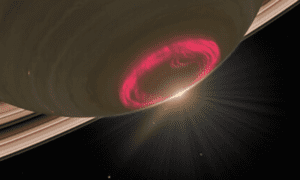

Auroras have been widely believed to be everything from a sign of death to the presence of the afterlife.
Auroras’ hypnotic light show across the sky has astonished humans for centuries. The northern and southern lights have been the subject of innumerable folktales and myths all around the globe, which is not surprising to anyone who has ever been lucky enough to see them in person.
The collision of sun particles with our atmosphere is the root cause of this occurrence. This incredible phenomenon happens close to the Earth’s poles and looks like the sky is on fire with all the rainbow colors.
Studies continue to collect to delve into the mysteries of auroras; our forebears also sought to understand the phenomena, but they came up with far more fanciful interpretations tinged with awe, dread, and amazement.
From ancestor spirits to signs of impending doom, auroras have long and storied mythology, and we’ll examine it all here while dispelling some myths.
It is a Divine Gift.
The aurora borealis illuminates a historic wooden Viking ship, which serves as the showpiece. Borgarfjardar, Iceland, is home to an ancient Viking ship and the aurora borealis.
Many cultures worship deities such as the Aurora Borealis. Some see them as a gate to the next world, while others see them as the hands of the gods.
As a sign that their deity Odin had dispatched the Valkyries, who are typically portrayed as female warriors atop horses, to gather the souls of slain heroes and transport them to Odin’s hall, Valhalla, the northern lights were a cause for celebration for the Vikings.
The Norwegian tourism website states that the Vikings thought the Northern Lights were the reflection of the Valkyries’ armor. According to Norweigan Coastal Express, Hurtigruten, another Nordic myth holds that the aurora bore the breath of dead warriors, and in other stories, the aurora was said to be the “Bifrost Bridge” that leads the fallen to Valhalla.
The aurora borealis has multiple meanings to various indigenous communities across North America. Aurora Zone, a travel website, reports that Cree Indians believe the northern lights to be messages from loved ones who have passed on, attempting to reach those still alive.
For the Algonquin people, the northern lights are a sign that their maker, Nanahbozho, is watching them. Legends from faraway Nunavik Island depict the aurora as walrus souls jousting with a human skull.
One beautiful tale about the aurora borealis originated in Finland, where the locals thought the legendary Firefox had set the lights on fire by darting across the snow at such a high speed that sparks flew up into the sky. “Revontulet” means “Firefox” in Finnish, as reported by the Aurora Zone. This name describes the northern lights.
Auroras Can Only Be Seen in Chilly Weather.


Everyone hears this fallacy all the time. In reality, the aurora borealis constantly surrounds the North and South Poles, so the northern lights are visible at all times of the year. Most people believe that cold weather is necessary to observe the auroras since they are often seen at the poles, where it is typically frigid. However, the spring and fall equinoxes are typically when the auroras are at their strongest, as these are the two warmest periods of the season.
Midway Through Winter is When Auroras are Most Common.
This is yet another widespread misunderstanding. The northern lights are visible at all times, every day of the year. So, to view them, you must wait until it’s dark. This false belief is perpetuated because most northern light photographs and films are shot in frigid, winter-like environments, even though auroras primarily manifest in polar regions.
Under a Full Moon, The Aurora is Invisible.
This is just another instance of false information lacking any real foundation. At any point in the moon cycle, you will most certainly be able to see the northern lights. One important consideration is that a full moon can obscure faint auroras.
However, I firmly believe that a sky watcher’s dream come true would be a full moon accompanied by spectacular auroras, which are frequently visible around solar maximum.
The rationale behind this is straightforward: under the moonlight’s luminous glow, the environment is illuminated, revealing breathtakingly dark landscapes adorned with dancing aurora borealis.
Many of our company’s photographic expeditions are centered around capturing the northern lights. In my experience, many professional photographers prefer to go on these trips during full moons because the two together are so photogenic and breathtaking.
Auroras Occur Only Once Every Ten Years.
Although we do not hear this one as frequently as the others, it does arise occasionally. As I had assumed, the sun’s high and low activity cycles, which occur every 12 to 13 years, are probably the source of this. Solar maximum and minimum describe this process.
We observe auroras during both stages of solar output since I have been out chasing them for nearly fifteen years, making me an aurora guide for both solar maximum and minimum. Solar maximum is characterized by more muscular and more spectacular auroras than solar minimum, while the latter does not occur as frequently but still many times per season.
As long as the Earth has remained in orbit around the sun, auroras will continue to occur regularly throughout the year. Fortunately, solar maximum is almost here, and this one is one of the strongest solar maximums in history. Because of this, going to the Arctic to witness the northern lights throughout the next few years is a fantastic idea.
Thank you for taking the time to read my story. If you enjoyed it, please consider following me on Medium and LinkedIn and subscribing to my website newsletter for more stories in various categories. Have a great day!


